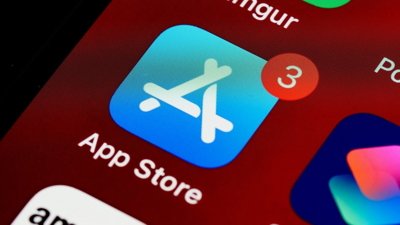Apple this week began evaluating repair depots for its iPhone launch overseas. Meanwhile, an update to the company's Final Cut Pro video editing solution is making the rounds. And six new trademark filings, covering primarily Leopard technologies, have turned up this month.
Representatives for Apple this week were said to be casing out a Unipart Trade Logistics-operated mobile phone repair centre in Europe to determine whether it would be suitable to handle iPhone repairs.
The Nuneaton, England-based depot is reportedly used by UTL to handle after-market hardware and software faults from other mobile phone manufacturers and network operators.
European iPhone availability is expected in late 2007 with availability in Asia to follow in 2008.
Final Cut Pro 5.1.4
Apple this week released an update to its Final Cut Pro video editing software solution.
According to a brief set of release notes, Final Cut Pro 5.1.4 [38MB] delivers important bug fixes to resolve plugin issues.
This update is recommended for all Final Cut Pro 5.1, 5.1.1, 5.1.2 and 5.1.3 customers.
Recent Apple trademark filings
According to checks with the United States Patent and Trademark Office, Apple this month filed for six new trademarks on terms relating primarily to its upcoming software technologies.
In addition to filings for marks on "iTunes Store" and "Cover Flow," the Cupertino-based company is also seeking the rights to trademarks on Leopard-related technologies "Core Animation," "Spaces," and "Xray."
For those who don't recall, Xray is a new timeline-based performance visualization tool Apple is rolling out with Leopard, which offers developers the ability to see how their application works in a completely new and intuitive way.
"It let's you watch CPU, disk I/O, memory usage, garbage collection, events, and more in the form of graphs tied to time," Apple wrote in a description of the new application. "For example, you can track UI events in real-time and see how they affect I/O activity and CPU load at the same time. And, once the data has been collected, you can scan back and forth through your application's run and see exactly what occurred, and when."
A sixth trademark request by the company was made on the term "Objective-C," in reference to the reflective, object-oriented programming language use primarily amongst Mac OS X programmers.
 AppleInsider Staff
AppleInsider Staff






-m.jpg)






 Malcolm Owen
Malcolm Owen
 William Gallagher
William Gallagher
 Andrew O'Hara
Andrew O'Hara

 Sponsored Content
Sponsored Content
 Charles Martin
Charles Martin










13 Comments
Good Apple is protecting their back... We don't want something like the iPhone trademark issue hitting... But with the product released AND Apple not being able to settle. That wouldn't be pretty.
I guess I missed Xray but it doesn't seem that groundbreaking. It would be nice if a screen shot was given.
I guess I missed Xray but it doesn't seem that groundbreaking. It would be nice if a screen shot was given.
Xray borrows a cue from music editing applications where multiple instruments perform over time. It allows to you select just the instrumentation that you need to examine your application. For example, you could set up instruments to monitor both object allocation and garbage collection. Then, when you run your application, these instruments present their findings alongside each other so that you can see the relationships between the two.
Watching your application's performance in real-time is only the start of Xray's capabilities. Once the data has been recorded, you can move back and forth through the application's timeline and closely examine the recorded data. This lets you exercise your application as a user and then later roll back through the recorded data to narrow your focus to see exactly what happened and when.
Linkage: http://developer.apple.com/leopard/overview/index.html
While it may not be a big deal to you, it is to developers.
So could a user use Xray on an app they didn't create to determine why it's running slowly (e.g. requires more mmory, faster HDDs, etc.)?
So could a user use Xray on an app they didn't create to determine why it's running slowly (e.g. requires more mmory, faster HDDs, etc.)?
I'm no expert but I don't see why not, unless the app has to be in debug mode
I'm no developer but I see this as a good thing and I am really hoping that Apple use this when they cover stress testing. I know for me sometimes Safari comes to a complete stand still and almost brings the entire system to a halt.
I'd be more than happy to live without the Spinning Beach Ball of Death™